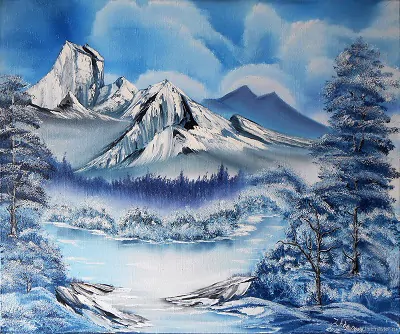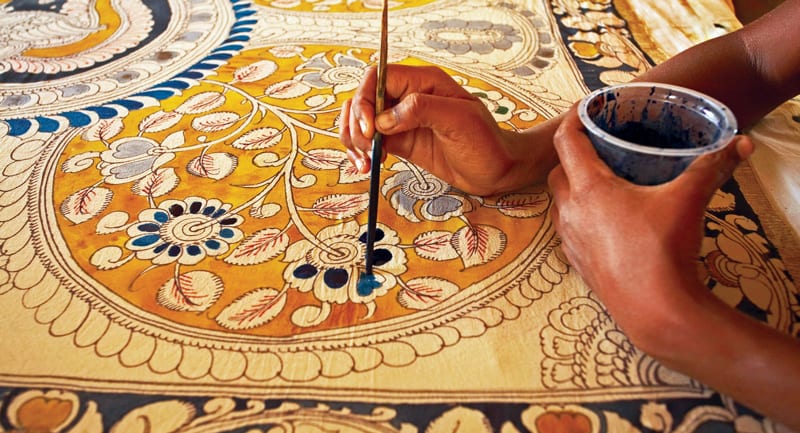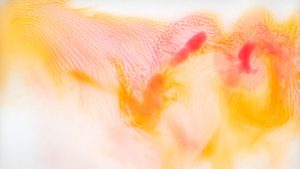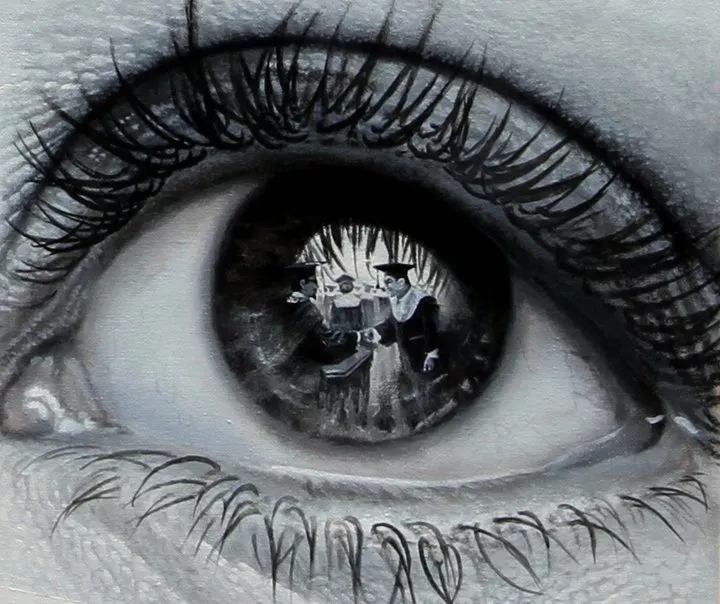India has an anthology of songs, music, dance, theatre, folk traditions, performing arts, rites, rituals, paintings, and writings that we identify as the ‘Intangible Cultural Heritage’ (ICH) of humanity. Also, Madhubani paintings are part of the same anthology series. The word Madhubani means ‘Honey Forest’. Madhubani painting also known as Mithila painting is popular in the state of Mithila in Nepal and Bihar in India. It’s unfeasible to tell its exact place of origin. However, Ramayana during the 7th century narrates its creation.
Story behind traditional Madhubani Paintings
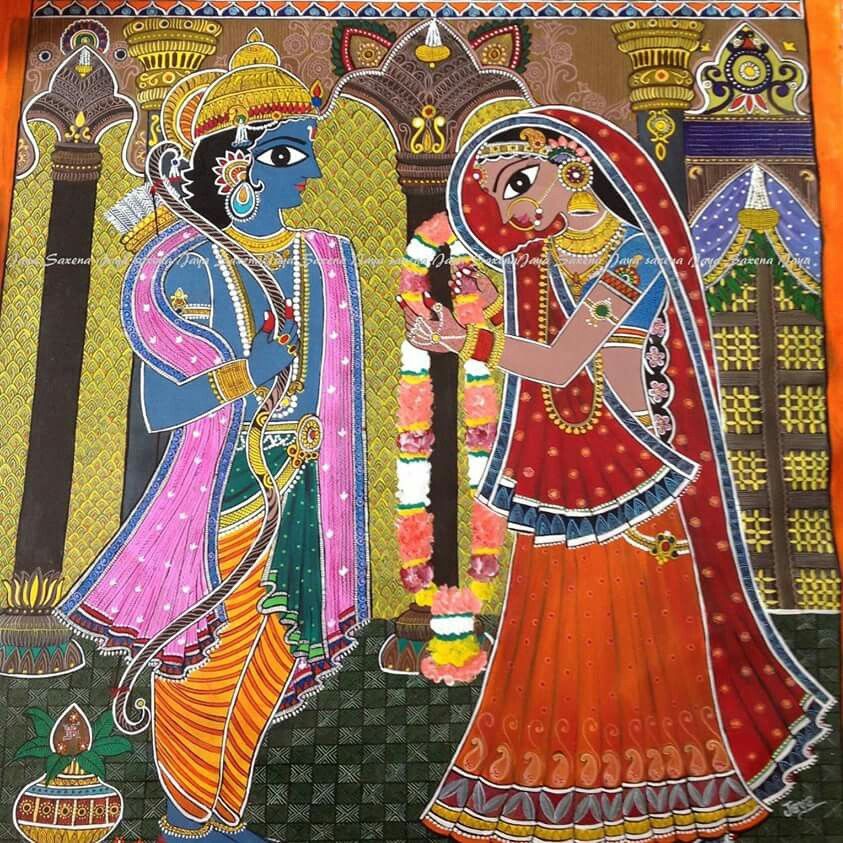
King Janaka of Nepal hired local artists to paint murals in his palace for the wedding of his daughter Sita to Lord Rama. At that time the artists of the region especially female artists furbished his palace with this beautiful art form of India. The culture and beliefs of the Mithila people were the theme of the paintings as directed to them.
The practice related to Ramayana is still present in several religious ceremonies. Therefore, In the Hindu marriage ceremonies, pandits share the stories of Rama and Sita’s married life and guide the newlywed couple to abide by the responsibilities. Also, The already married couple of marriage takes blessings by touching the feet of the newlywed couple. For some reason, it’s the same as taking blessings from Rama and Sita for a happy married life.
Making of Madhubani paintings
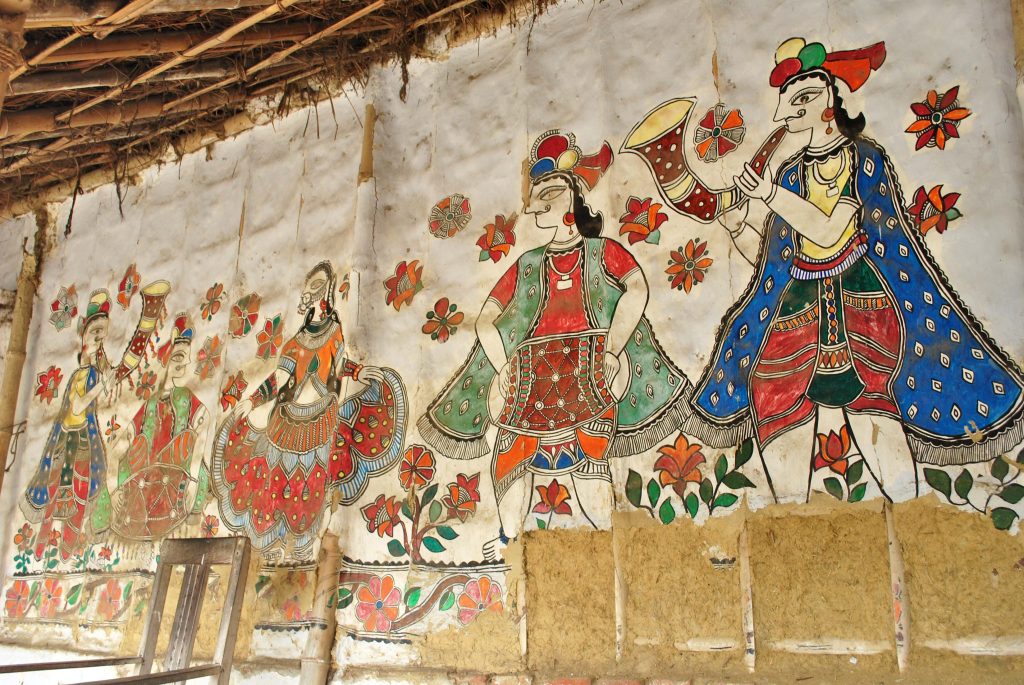
Also, Artists create these paintings on the walls. Traditionally, rice paste and vegetable colours are used on the base of cow dung and mud. However, now it’s done on cloth, hand-made paper, and canvas.
The figures painted in Madhubani art are symbolic. for example, Fish, the lotus plant, bamboo grove, birds, and snakes in the union represent good luck and fertility.
Natural objects like the sun, the moon, and religious plants like Tulsi, Bargad, and Badh are also common.
The central theme of all Madhubani paintings is love, fertility and prosperity. Before starting the painting, women usually do a prayer to God so that their help goes along with them in their purpose or rituals.
For Its expansion, the cotton wrapped on a bamboo stick is used as a brush. Artists usually make these paintings in a separate area of the house. However, This could be the prayer room of the house, near the ritual area, the bridal room, or the main walls of the village to welcome visitors, etc.
The drawings of nature and mythology glimpse according to the style of each region. The vision of individual artists can discern the meaning inherent in the paintings.
Madhubani art too took inspiration from nature and Hindu religious motifs. the story and themes generally revolve around Hindu deities especially, Krishna, Rama, Shiva, Durga, Laxshmi, and Saraswati.
What makes Madhubani unique and divergent
Madhubani or bhitti Chitra looks very different and unique. The paintings don’t leave any empty space. Natural objects and other simply unique designs fill all the gaps in the paintings.
Artists choose vibrant colors for Madhubani paintings and make use of natural sources of colors like plants and charcoal soot. The yellow color comes from turmeric, pollen, or lime and the milk of banyan leaves. Red comes from Kusum flower juice, red sandalwood or rose. Green from the leaves of apple trees, white from rice powder, and orange from palasha flowers.
Journey to become a famous and internationally recognized art
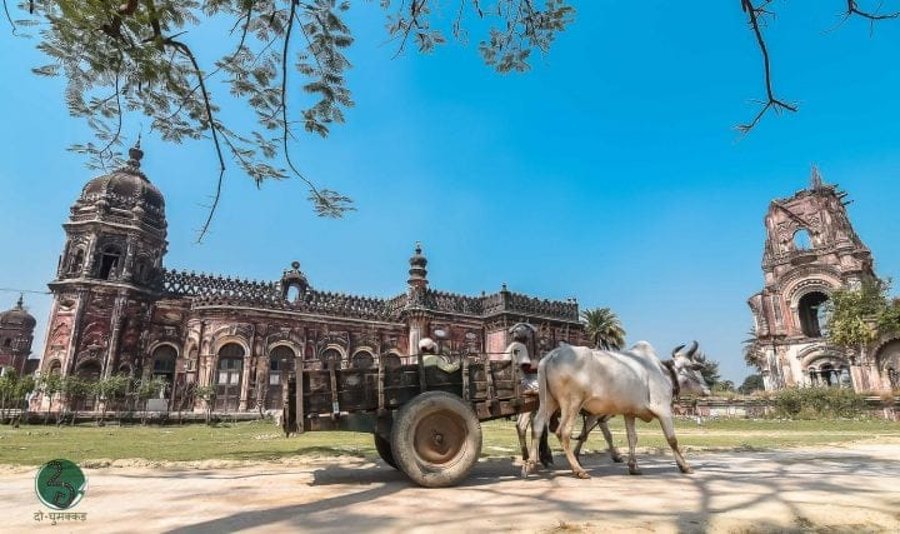
The existence of this art form remained unrevealed to the outside world until the earthquake of 1934. The houses along the India-Nepal border tumbled down and the British colonial officer in Madhubani district stumbled upon these paintings on the walls of those homes.
At that time it got support from the British government. As a result, the artists were officially recognized for their skills in making beautiful Madhubani art.
Madhubani Artists of India
Madhubani Painting provides help to about 20000-25000 artisan families on regular basis in the Madhubani district and provides livelihood. Artists worship their art and they do not compromise on basic fundamentals of Madhubani paintings. They sell their art in the domestic as well as international market with the support of the government. The Bihar government granted special amenities for the magnification and development of Madhubani paintings and artists respectively.
Upendra Maharathi Shilp Anusandhan Sansthan become successful in maintaining and sustaining the interest in Madhubani paintings, thus keeping alive a centuries-old Madhubani art form. Today, not only women but men are also practicing the Madhubani art as a means for their livelihood.
Madhubani district of Bihar
It is famous for its wall art and their ancient culture, which is the core of Mithila culture. Saurath , Bhawanipur, Uchaita, and Kapileshwarsthan are the four villages that attract the largest number of tourists. These villages have beautiful and significantly old temples of famous Hindu gods and Goddesses. In these temples, people not only go for worship but do get employment opportunities, especially women of the villages who sell flowers, Prashad , fruits, and sweets. At last, One can easily find Madhubani paintings of God selling around the temple areas.
Surajkund International craft Mela

During the first fortnight of each February Haryana government organize Surajkund international craft mela . Surajkund craft mela is the world’s largest craft mela. Surajkund craft mela is well-known for its multifariousness and richness in varieties of magnificent handicrafts, handlooms, and small-scale businesses showcased from around the world.
More than a million of people attend this craft mela every year and celebrate the Indian folk traditions and cultural fabric of India created to represent the ethos of rural India. The handmade fabric soaked in vibrant colors and distinguished embroidery makes an eye-catching display for the tourist as well as for the locals who comes from the urban areas.
The multi-cuisine Food Courts provides pleasant and satisfying flavors from all over the world especially popular state food of India. Big famous personalities and stars are attending this craft mela who are interested in expanding their existing business. Surajkund International craft mela allows to Business ideas and promotes partnership opportunities to visiting investors. Surajkund International craft mela gives the opportunity to small artists for the expansion of their art via providing unrestricted interaction. Meanwhile, help in achieving the goal of sustaining ancient art forms and providing platforms to small village artists.
The concept of Food trucks introduced recently in the food courts area helps cut the cost of installing a stall in the mela and also simplifies the process of showcasing art and craft by rural artists who do not have marketing skills and connections to maximize their profits. There are separate places for amusement, adventure sports and joy rides to make it a must-visit craft mela for the young and kids. So that people of all ages can come and enjoy the evening providing various affairs.
Final Thoughts
Madhubani Painting, an intricate delicacy that attracts wide masses has some unknown facts, with which you might have got familiarized now. To know some unknown facts about different bunch of arts and artifacts, you can ponder over the Podium Blog, for sure!
Share with your friends


